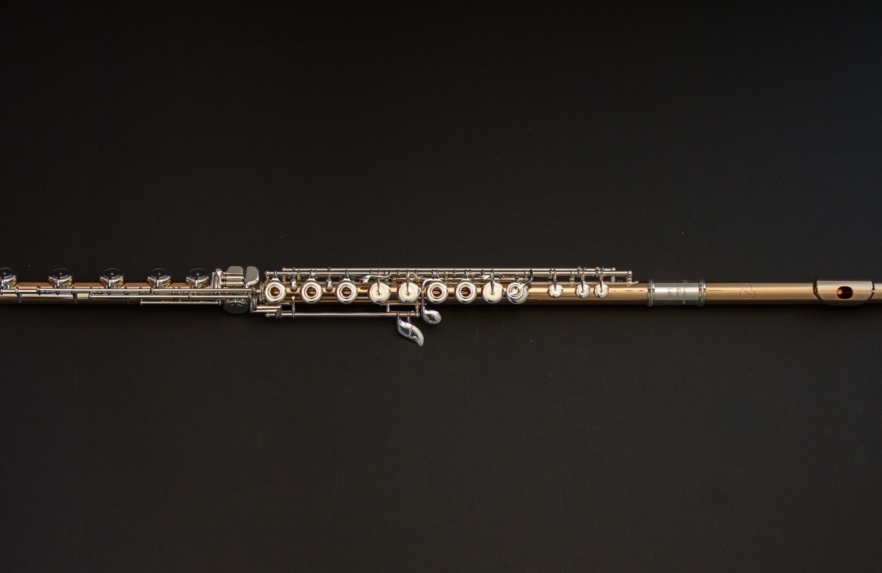Commissioned by François Minaux, this special project had three goals. First, with a footjoint going down to low A, the flute should be able to play transcriptions of violin repertoire. Second, the flute should use the Parmenon G#, which removes the traditional tone hole with closed G# Boehem System flutes. Removing this tone hole optimizes the resonance of the sound waves. Finally, the tone holes on the mainline of the body must be in “One-Line” and the key cups must open in the same direction (facing forward from the flutists). This design challenge increased the fluidity and projection of the sound, and was especially difficult for the flute maker as all fingering must be the same as traditional concert flutes.
Search
Métis pad cup A, “One Line” mechanism

«Foot joint»
The two additional tone holes on this footjoint enable the flutist to play all the way down to low A. The B-flat and A are reached using two additional lever spatulas which are positioned under the G# spatula, played by the left-hand pinky finger.

Sol# Parmenon®
Using our latest design, this flute has an open G# system which uses traditional closed G# fingering. The G# tone hole does not exist on the backside of the flute, the note is produced using the upper G tone hole on the mainline. Usual fingering is used to play the note thanks to an articulated mechanism.

“One Line”: the thumb
The thumb on this flute is located in its traditional place, but the tone holes is placed on the top of the flute, on the mainline of the body, just under the C1 key. The C1 is raised slightly to accommodate the space needed for the thumb tone hole and key cup.

“One Line”: trilling
The trilling key holes are also placed on the front of the tube, rather than on the back. Their spatulas are still located on the right hand mechanism.
